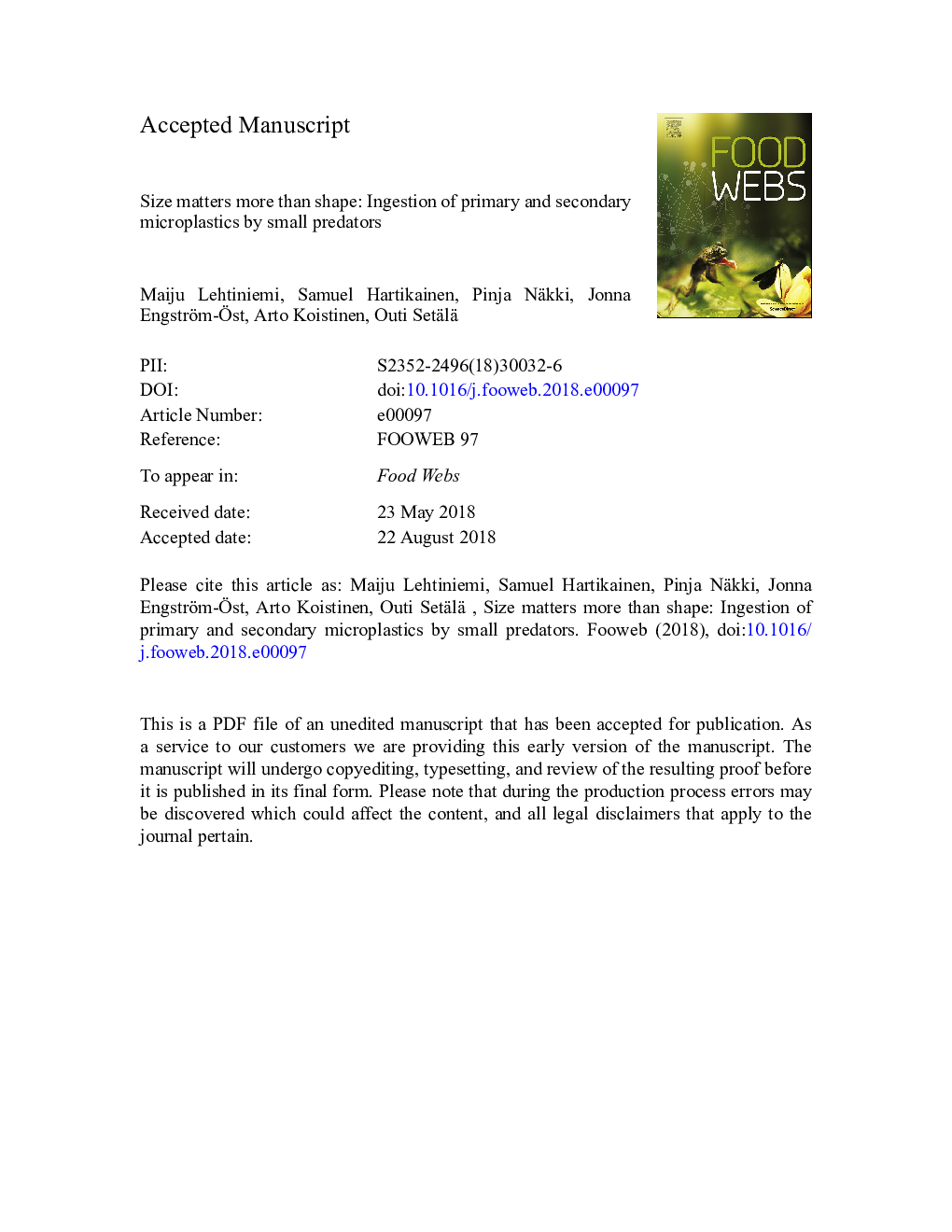| Article ID | Journal | Published Year | Pages | File Type |
|---|---|---|---|---|
| 11028604 | Food Webs | 2018 | 21 Pages |
Abstract
Experimental studies have shown how microplastics are taken up by various aquatic organisms. Most of these studies have been carried out with small (<100â¯Î¼m) symmetrically shaped primary microplastics (beads) which are not readily found in marine environment, and also in unnaturally high microplastic concentrations. We conducted experiments to study the ingestion of microplastics in more natural settings. We offered secondary microplastics to common planktivores, fish and mysid shrimps in their prey size categories to observe the uptake of such asymmetrically shaped fragments (PETâ¯>â¯200â¯Î¼m and ABSâ¯>â¯100â¯Î¼m) in comparison to primary microplastic beads (90â¯Î¼m). Our results show that fragments of secondary plastics may end up in the food web but only in small amounts, and that the size of the fragments more than their shape is a crucial nominator influencing the numbers of plastics ingested. Future research aiming to resolve the effects of microplastics in the ecosystems should focus on environmentally relevant plastics and concentrations.
Related Topics
Life Sciences
Agricultural and Biological Sciences
Agricultural and Biological Sciences (General)
Authors
Maiju Lehtiniemi, Samuel Hartikainen, Pinja Näkki, Jonna Engström-Ãst, Arto Koistinen, Outi Setälä,
